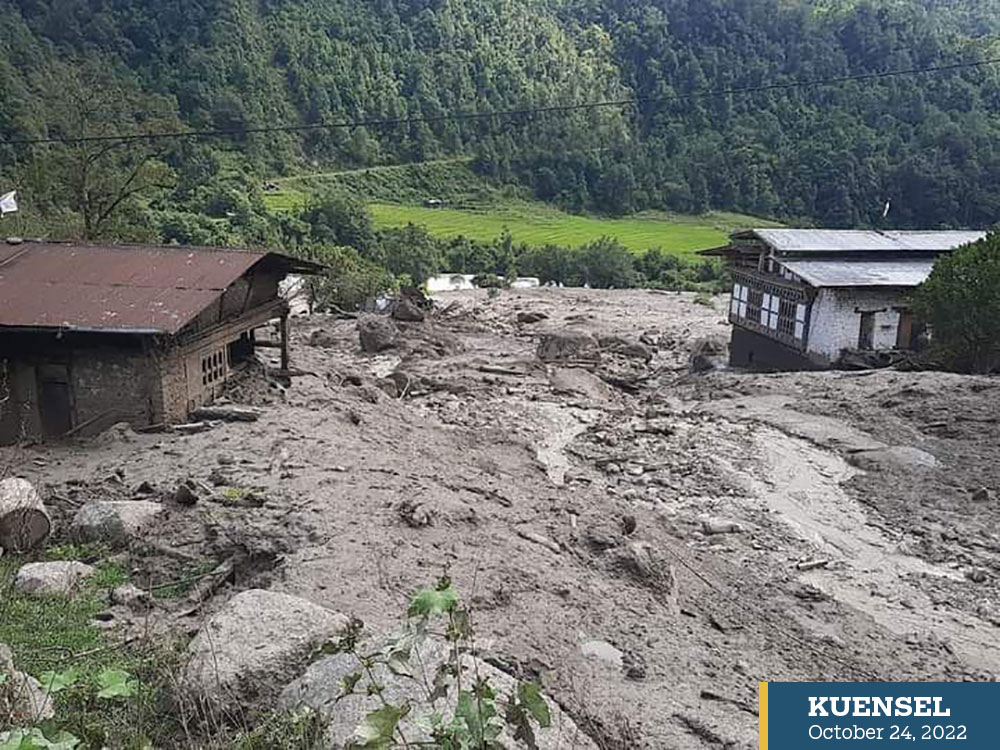Jasabi flood victims look for resettlement or protection
Tshering Namgyal | Mongar
It has been 21 days since the flash flood in Jasabi killed five people when their homes were washed away or buried under muck and debris. Life in the small village will be different, at least for some time.
Both children and village elders who were attending the 21st day ritual of five family members who were buried on the fateful night are worried and scared. They might not return to the village.
The couple, who were severely injured and admitted to Lhuentse hospital, recovered and were discharged on October 18 after being in the hospital for about three weeks. They are living with their daughter who is a teacher at Dungkar Primary School.
Jasabi-Ugyenphu tshogpa, Sonam Dorji, said that others have stayed in the neighbours’ houses – far from the flood site. Two families continued to stay in Tabi chiwog in a house belonging to a friend. Some stayed back in the village, in neighbours’ houses located in safer zones.
The September 30 flash flood washed away two houses, damaged another four and other rural infrastructure like irrigation canal, drinking water facilities, power supply amenities, solar/electric fencing, greenhouse, agriculture machinery, besides damaging paddy fields.
More than 15 acres of land, mostly paddy fields, and another five acres (mixed) were identified as flood-prone areas.
During the damage to crop assessment, it was calculated that at least 6.8 metric tons of paddy, 500 kilograms of millet, 350 kg of Re-lay maize, 455 kg of chilli, 610 kg of vegetables, 700 kg of citrus and 750 kg of pears belonging to different households were damaged.
Dzongkhag agriculture officials said the agriculture sector has sent the assessment report to the department of agriculture for further review. The flood also washed away 11 cattle. The dzongkhag disaster focal person is yet to file the report to the disaster management department.
Meanwhile, Jasabi residents have agreed to two options with the gewog and dzongkhag for their future. They could be resettled or their land could be developed with a motorable bridge constructed. As of today, the village is only connected by a suspension bridge and the road is connected just until the other bank of the river.
Villagers want to stay if there is a bridge over Kurichhu river connecting their village. “Our land is fertile and we can grow all types of cereals. Early chilli also thrives in the area. So we want to remain here. If not our option is resettlement,” a resident said.
Kuensel learnt that a resident in the village who has huge land holding has agreed to provide khimsa (residential land) in the nearby area at Khamphu ney which is considered safer.
Lhuentse dzongkhag administration will submit their assessment report to agencies concerned soon.


